Here in the cities the side yards are sometimes non-existent! More often, in the older neighborhoods they're fairly narrow 10' strips, often bisected with fencing. It isn't easy to figure out what to do with a 5' wide space, especially when you need to put in a walkway for access to the backyard.
On another thread I posted a photo of our south-facing, narrow side yard. I was subsequently asked some questions about the plantings, so I've started this thread to answer them. All of the photos that follow were taken in the last couple of years - I've selected them more to show seasonal changes.
First off, this is a full-sun exposure in the Oakland foothills, at the edge of the fog belt. This path always got unpleasantly hot. The house gains a lot of heat during the day with all that stucco soaking up the sun, so shading a good part of that walkway was a major goal.
Our second concern was design. The concrete walkway was an astoundingly boring, long straight run of almost 100'. It did angle slightly, so what was a meagre 12" wide x 45' long planting strip next to the neighbor's fence, widened out to about 30" wide x 80' long (woohoo!) as it stretched towards the back fence.
The planting strip next to the house is a slightly wider 18" x 40'. Because of the taller plants I've put in, a short section of the lower (east end) of both strips are now partial sun areas, not full sun.
Most plants, I've discovered, naturally fall towards open air. Keeping them upright requires either support or pruning shears. Sometimes you just have to be ruthless, LOL!
Here's the photo of the south-facing side yard in May. On the LH side, that is a purple 'Jackmannii' clematis leaning in, and those are nasturtiums climbing the roses. They will disappear as soon as the ground warms up, however, and I have to yank out handfuls to keep them from smothering the perennials I have planted at the foot of the tree roses:
{{gwi:530562}}
This is what it looked like before we started the landscaping:
{{gwi:530563}}
I aim for a good-looking cottage garden year round, but there's a couple of 'dead months', as one can imagine. This is a January photo and there's not much happening:
{{gwi:530564}}
The white-leafed shrub behind the canna, on the RH side near the fence, is a Variegated Rhamnus. It's a magnificent narrow-growing shrub, but I made the mistake of heading it, and it DOES NOT LIKE this at all. Huge mistake, and I really regret it. It has never really recovered, shape-wise. But it's beautiful, is well-behaved unliked many of its species, takes little water, and has marvelous tiny colorful flowers in spring, as you can see below:
{{gwi:530565}}
On the LH side are a variety of smaller plants that must all live with little attention and rare watering, maybe once a month in summer. Other beds are on soaker hoses, but this fence side has to live on runoff or an occasional soak. Front to back:
-Calla (Z. aethiopica, they will disappear when the ground warms up)
-"Vancouver Bicentenntial" fancy-leaf hybrid pelargonium
-"Pink Lady" variegated dwarf canna
-more white callas
-tall red-flowering, dark-leaf canna
-Helleborus hybrid 'Pink Lady'
-Variegated boxwood (has a nice creamy yellow tone to its leaves)
-Variegated liriope "Silver Dragon"
-orange clivia, which sit at the foot of the Variegated Rhamnus (shown above)
{{gwi:530566}}
The lower half of the LH side bed starts to get a little shadier because of the house next door. It's still bright and sunny, but starts to see shade by late afternoon. The plants after the Rhamnus are:
-two more clivias you can't see
-Microlepia fern: this fern is a rare one that will survive dry conditions. The downside is that it gets very big very fast if you water it; it is an aggressive runner.
-a second "Vancouver Bicentennial" pelargonium that is too low to see in this photo
-a scented pelargonium that has grown from a 3" pot to a 6' monster. It sprawls and must be staked to keep from falling over.
-Tree is actually an oleander standard, the white-flowering "Sister Mary Agnes"
-Colorful groundcover plant is one of my favorites, Oxalis siliquosa "Copper Sunset"
{{gwi:530567}}
This photo looks upwards rather than downwards, and shows three of the four tree roses I grow against the house. It was taken in November. Front of photo to back they are: Intrigue, Delany Sisters, and Double Delight. In hindsight I would not plant another grandiflora like Delany Sisters again. The multiple flowers are too heavy for the plant and they fall over into the walkway. Tea roses like Delight or less vigorous floribundas like Intrigue, work much better for vertical growth. At their feet, what's worked best are shrub roses, this is a pair of J&P's "Ladies in Waiting".
{{gwi:530568}}
In the above photo, the top part of this bed starts with a very tall-growing variegated euonymus, through which the 'Jackmanni' clematis twines. I've had difficulty filling the "middle layer" where the Double Delight and Delany Sisters tree roses are, and am still working on the right plant mix. Currently there's:
-Ceratostigma: hideous plant. Beautiful blue flowers, but it's deciduous and disappears half the year. And it's impossible to dig out.
-Yellow flowering erysimum: Nice plant, but it leans into the pathway; I need something vertical, not horizontal.
-Dianella: I like this one, with beautiful variegated leaves. But I have to site it where it will be shaded a little by other plants, it doesn't like too much sun.
-Aeonium: Big mistake. Too close to the walkway and just doesn't play well visually with its neighbors.
-"Ruby Comet" argyranthemum. It likes where it is, but it leans too far into the walkway. Nice plant, though - bright long-lasting blooming period, lovely bright green foliage.
Now we are going to walk halfway down, past the house to where that fence-side bed widens out a bit (30" inches wide) to let me plant something bigger. The original owner built a patio and shed, which we kept. In 2003 I planted the three shrubs in this photo, L-R: heirloom yellow cestrum, red oleander standard, pink cestrum. At their feet, L-R, are a hellebore, dianella, variegated holly, bearded iris. The dianella eventually died and was replaced with Oxalis siliquosa and a Microlepia fern.
{{gwi:530569}}
The arbor (in the photo above) was moved forward and is now next to the yellow cestrum. This has become a monster shrub, 20' tall, 8' across the base and easily 25' around the top. It has essentially choked out the red oleander, which tries but just can't compete with it. The pink cestrum is a modern hybrid of the yellow--shorter, more prone to scale infestation, but much more floriferous; it is hardly ever out of bloom. Hummers love it, so I try to keep it alive for them.
{{gwi:530570}}
Finally, I was asked what I use for rose supports. The best thing I've found are the green "Stacking Tomato Ladders" from Gardeners' Supply Company at gardeners.com. I waffled about these for a couple of years but now I'm very glad I bought them. There is nothing sturdier than these ladders; they are definitely worth the money.
Here is a link that might be useful: Ladder supports

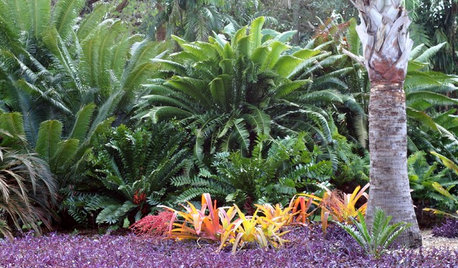


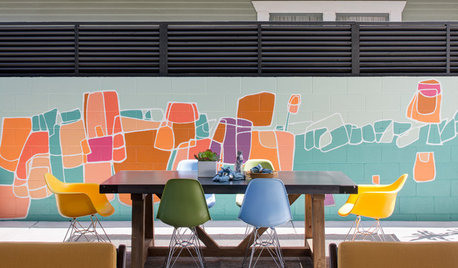
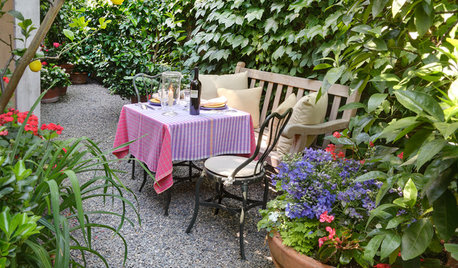
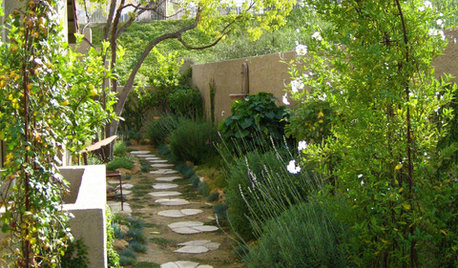
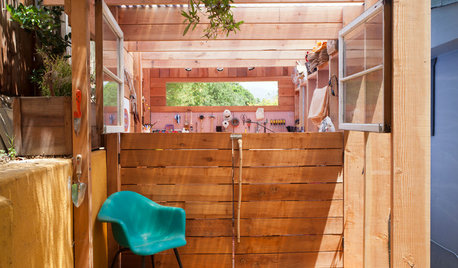
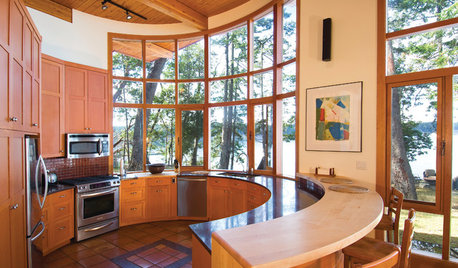
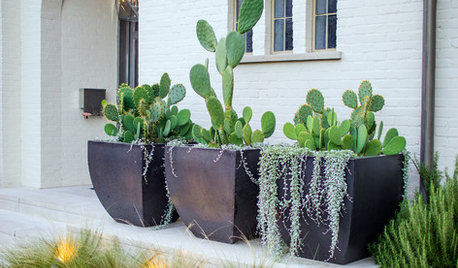



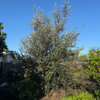
jenn
jakkomOriginal Author
Related Discussions
Redesign for long, narrow side yard with path
Q
Help with design of narrow, sunny spot
Q
Help? Trying to Create Shade in my Sunny Massachusetts Yard
Q
a CA cottage garden instead of lawn
Q
gobluedjm 9/18 CA
jakkomOriginal Author
jenn
jakkomOriginal Author
jenn
hoovb zone 9 sunset 23
jakkomOriginal Author